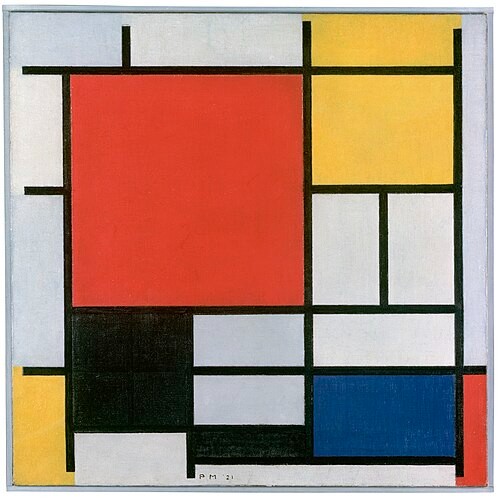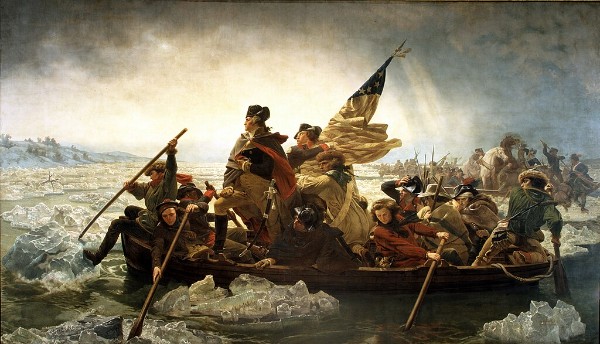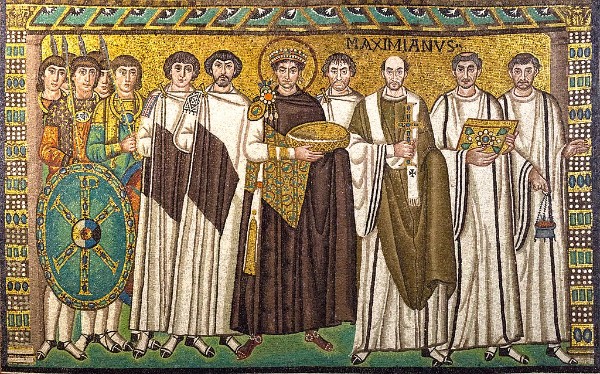Alan Hovhaness’ Piano Sonatas Inspired by Paintings of Cats
Cats were the favourite creatures of the Ukiyo-e (floating world) painters. They were shown in all kinds of attitudes: caught up in hunting, caught up in clothing, washing, playing, sleeping, in short, doing all sorts of cat things.

Hiroshige: Cats (colourized)
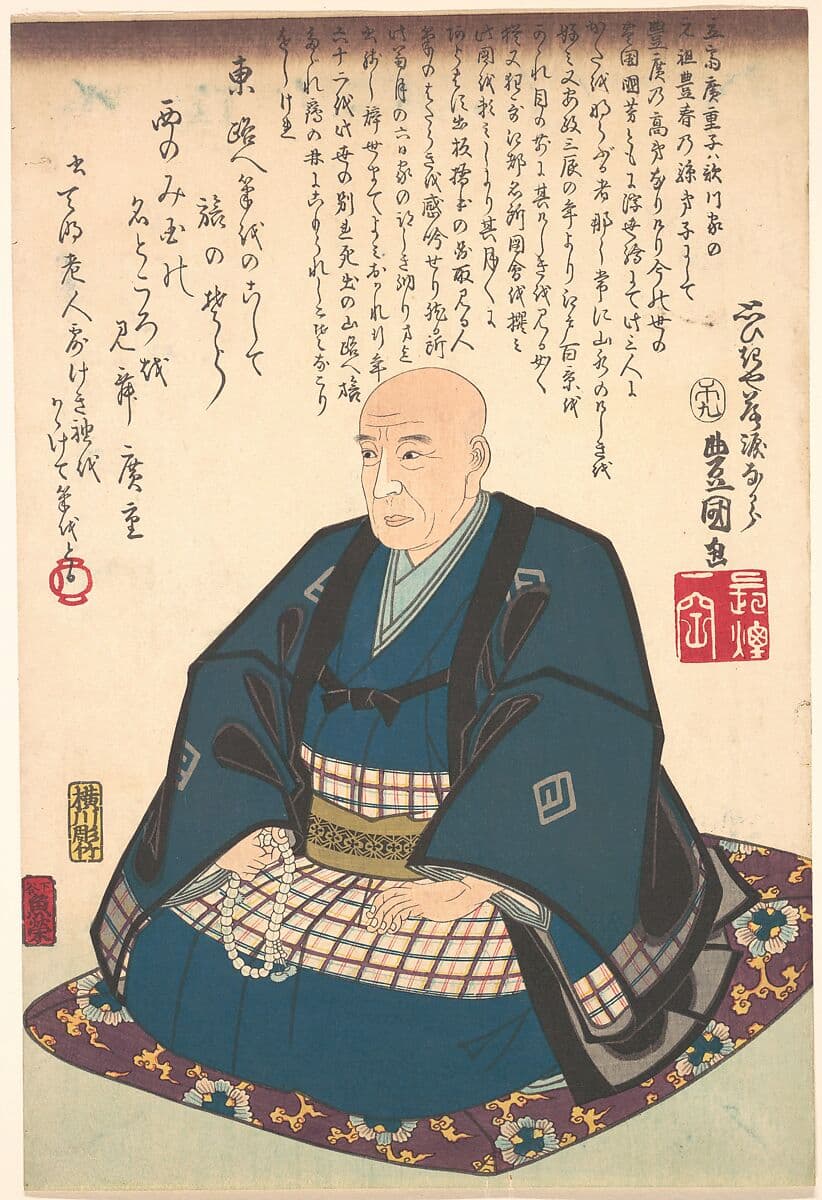
Kunisada or Toyokuni: Memorial Portrait of Hiroshige (Met Museum)
Utagawa Hiroshige (1797–1858) followed the career of his predecessor Hokusai in creating his landscape series The Fifty-three Stations of the Tōkaidō and One Hundred Famous Views of Edo. His illustrations were less formal and picked up more of the ambience of the places he depicted. His works were influential in the west, being collected by Manet and Monet, and copied by Van Gogh.
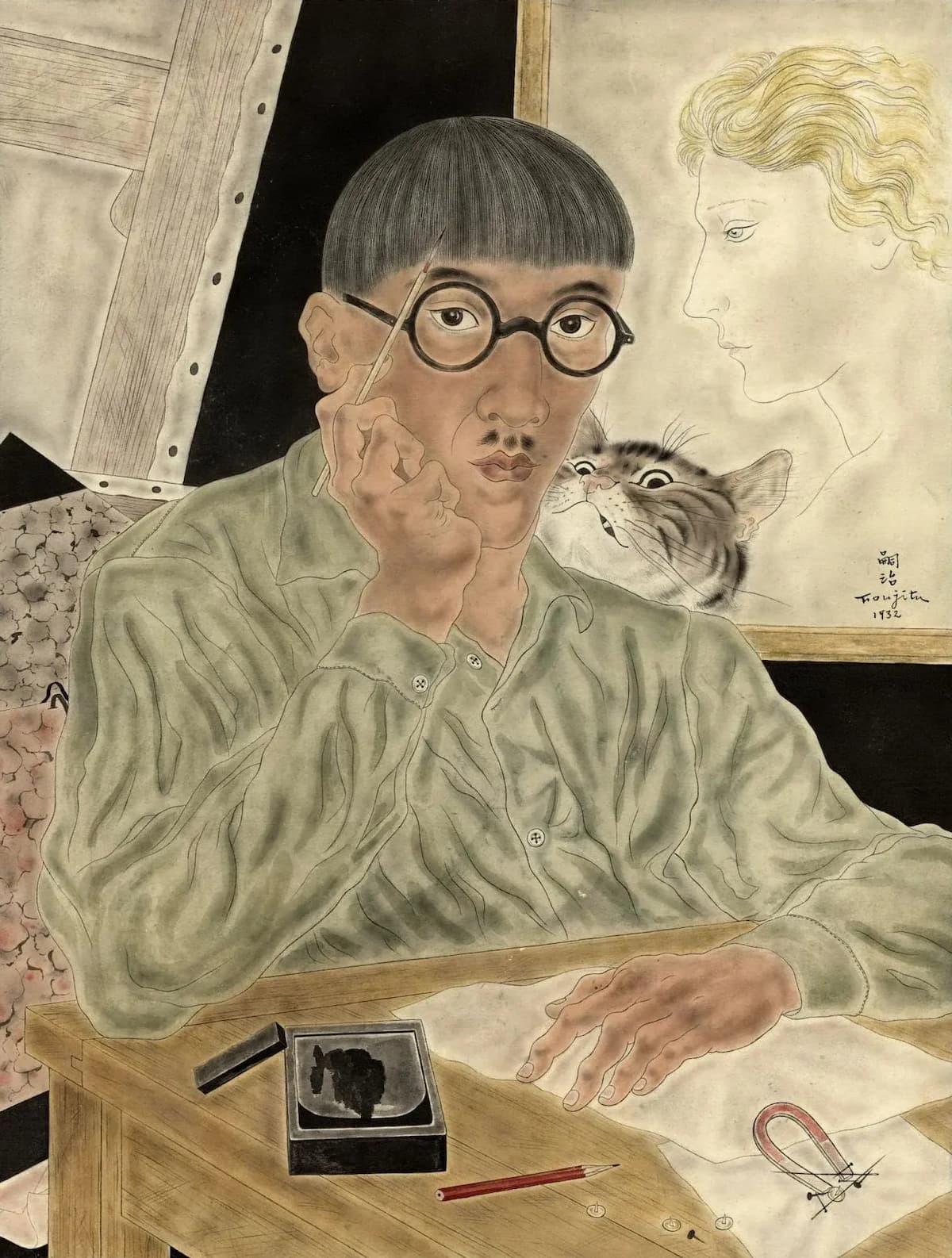
Foujita: Self-Portrait with Cat, 1932
Léonard Tsuguharu Foujita (November 27, 1886 –1968) was born in Japan but moved to Paris in 1913 and made his career there. He combined western styles, such as Cubism, with Japanese traditional brush techniques. He became famous for his portraits of cats. He returned to Japan in 1933 and became Japan’s leading war artists, founding the Army Art Association. He returned to France in 1950 when his reputation in Japan and America suffered from his war activities.
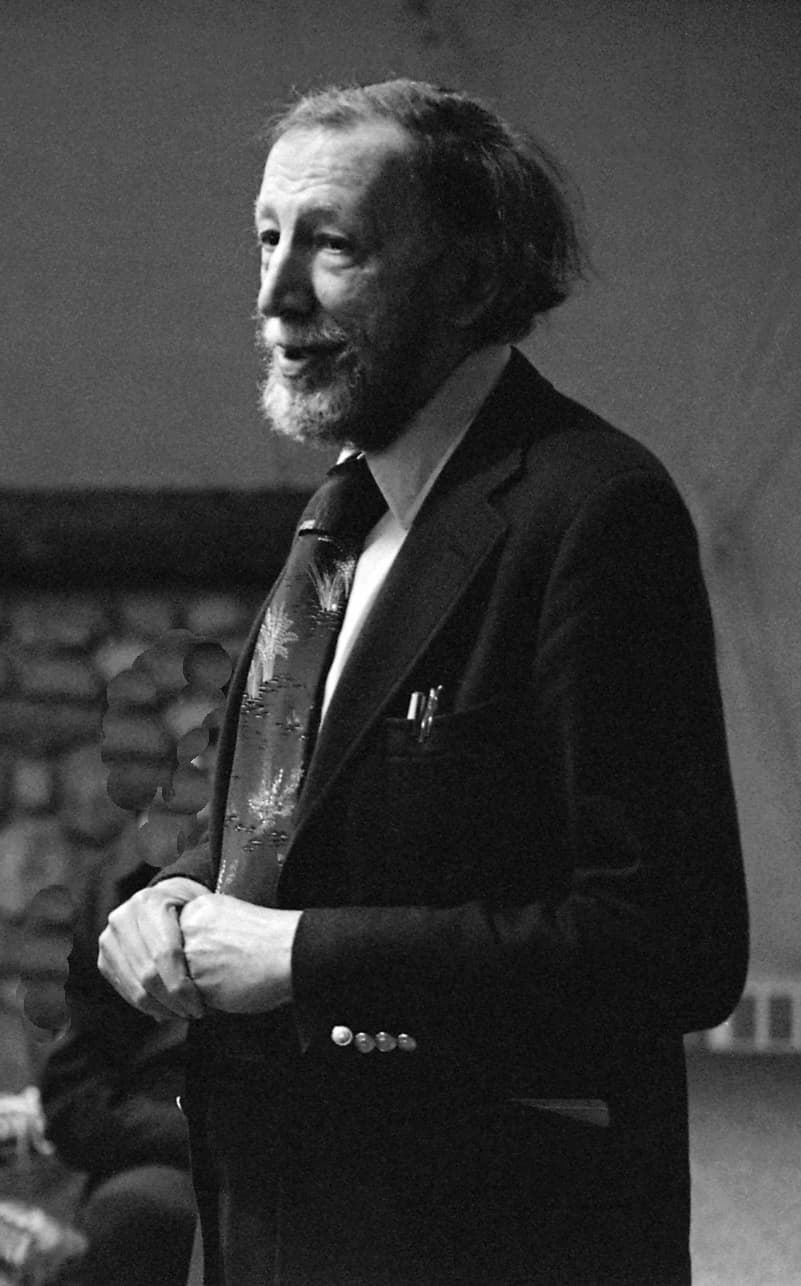
Alan Hovhaness, 1982
Cat pictures by both these artists were used as inspiration by the American composer Alan Hovhaness (1911–2000) for two piano sonatas, both written in 1982. The first, entitled Hiroshige’s Cat Bathing, uses a cat in a more typical human pose. Instead of being rolled in a circle, back paw in the air, this cat leans over a basin of water, kimono peeled back, using a sponge to clean its forehead, left paw in the water. This very human style of bathing is seen in many Ukiyo-e bathing prints, but rarely with this level of being uncaring about the viewer.
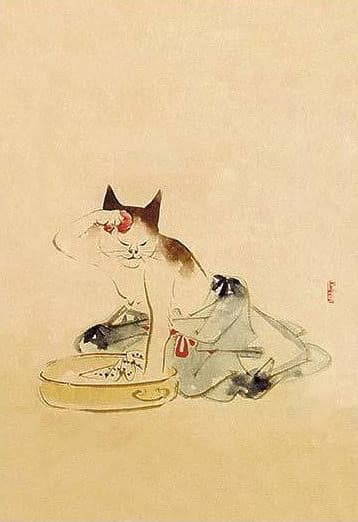
Hiroshige: Cat Bathing
Hovhaness’ six-movement sonata uses repeated notes as an important function in the piece. He starts with in lento cantabile, followed by a vibration fugue. Movement IV is simply entitled In Memory of a Great Cat. Movements III, V, and VI are entitled Jhala, a typical composition in Indian music with fast repeated notes alternated.
Alan Hovhaness : Piano sonata, op 366 (1982)
Foujita’s Sleeping Cat is the subject of the next sonata. His sleeping cat appeared in his 1930 limited edition publication A Book of Cats, where each image was accompanied by a poem by the British writer Michael Joseph (1897—1958). His cat is done in traditional Japanese ink technique, but with a more characteristic western finish than we see, for example, in Hiroshige’s cats, above. The paws are carefully delineated with the back-foot’s pads being shown.

Foujita: A Book of Cats: A Sleeping Cat, 1930
In Hovhanness’ sonata on this image, he keeps many of the styles he used in Op. 366: It opens with a Largo with large arpeggios before going into another vibration-style fugue. A long jhala follows and then after another vibration section, the work ends with ‘a Satie-like andante’ entitled Cat Dreaming.
Alan Hovhaness – Sonata “Tsugouharu Fujita’s sleeping cat”, op. 368 (I)
Alan Hovhaness – Sonata “Tsugouharu Fujita’s sleeping cat”, op. 368 (II)
Alan Hovhaness – Sonata “Tsugouharu Fujita’s sleeping cat”, op. 368 (III)
Alan Hovhaness – Sonata “Tsugouharu Fujita’s sleeping cat”, op. 368 (IV)
Alan Hovhaness – Sonata Tsougouharu Fujita’s Sleeping Cat, Op. 368: V. Cat Dreaming
These two sonatas are part of a three-sonata set that begins with 1977’s Fred the Cat.
For more of the best in classical music, sign up to our E-Newsletter

